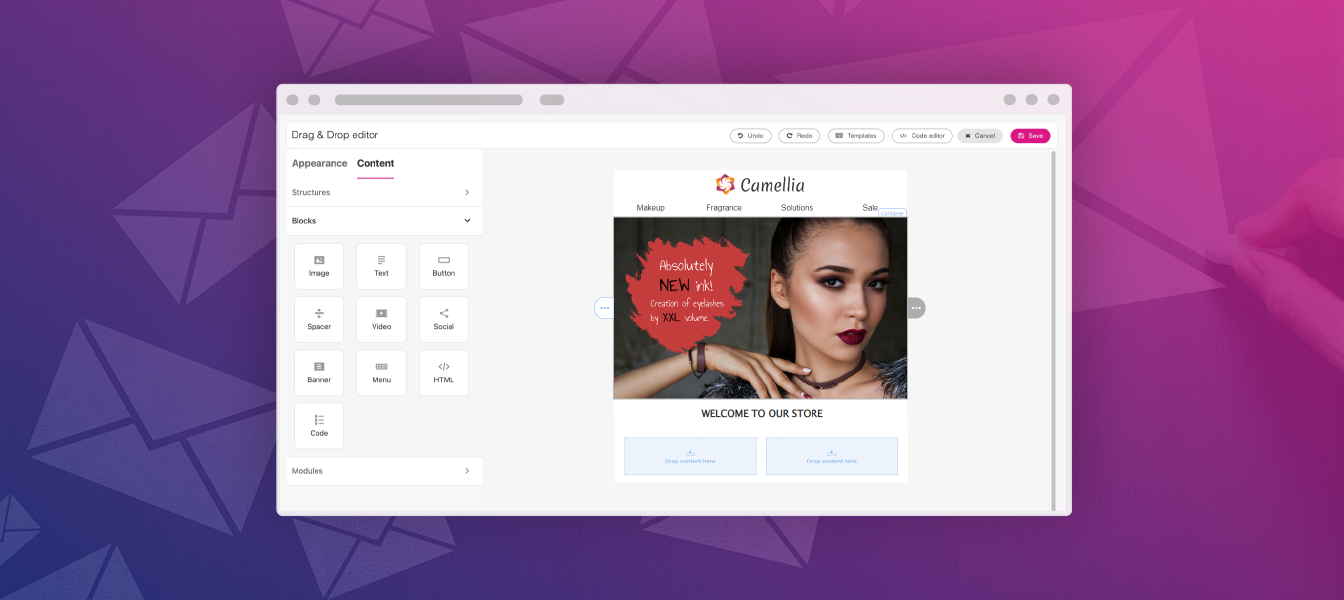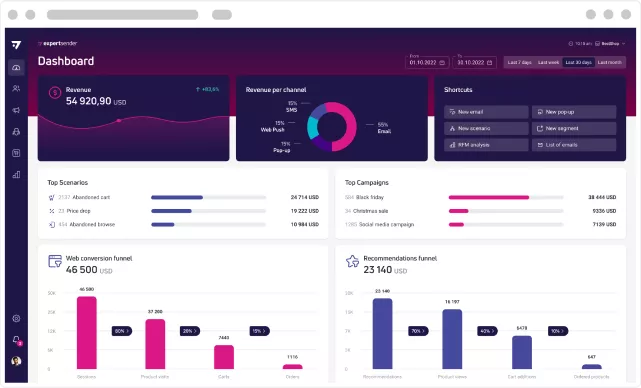6 marketing automation mistakes from my Clients’ practices (real cases!)

It is forecasted that global spending on Marketing Automation will increase to $25.1 billion by 2027, reflecting the growing awareness and demand for this technology.
However, we are all still learning how to harness the undeniable potential that comes from Marketing Automation efforts. Although I feel that we are starting to approach this area of marketing in our eCommerce with more awareness, mistakes are still quite common and can significantly impact campaign effectiveness and customer satisfaction. In today’s article, I’m sharing typical mistakes I frequently encounter while working with my clients. I’ll also show you what they can lead to.
1. You don't ask the right questions before implementing MA
To correctly implement Marketing Automation, a well-thought-out strategy is needed. Even if you're implementing a classic abandoned cart scenario, its final version depends on many elements that you should define, such as:
- How many steps should it include?
- After how much time should messages be sent?
- Which communication channels will you use (email, SMS, Web Push)?
- How will the content be structured?
These are just a few example questions regarding one scenario—the most popular and "obvious" one. 🙂 Asking the right questions about the purpose of the scenario, the problem it aims to solve, the communication method, and the data you can use will allow you to plan the scenario better, tailor it to your needs, and then more accurately measure its effectiveness.
2. You don’t send newsletters regularly
"I'll send one… and then we'll see."
Without a plan, a sending schedule, or prepared content, this approach will not lead to any positive conversions from email marketing efforts. Regularity, creating a sending schedule, planning content in advance, and basing it on a marketing calendar are very important.
Why? This way, you build and maintain a relationship with your audience. Subscribers get used to receiving messages from a specific brand at certain intervals, which strengthens trust in the brand. This also helps increase engagement and interest in your brand.
This directly affects the strengthening of your brand's image. It becomes more recognizable and associated with certain values or products. You increase the chances that subscribers will take advantage of the services or products you offer when the need arises. You remain in their memory. 🧠
What are the other benefits of sending newsletters regularly?
Regular newsletter sending also affects your results.
You can more accurately monitor the results of your marketing campaigns, enabling you to optimize your communication strategies. You can quickly respond to changing audience needs and adjust content to their expectations. This directly translates to better deliverability. Subscribers are also more likely to open and engage with your content.
Regularity also helps maintain your subscriber base and reduces the risk of unsubscribing—provided the content is valuable (important!), but I’ll talk about that in a moment.
In short, regularity in sending newsletters is a crucial element of an effective email marketing strategy, influencing brand awareness, customer relationships, increasing audience engagement, and strengthening your brand image.
3. You send only sales content
"Sale," "promotion," "buy our new products," "complete your purchase" – is that the only theme of your newsletters? I recommend changing your approach and working on diversifying your content. Why?
When newsletters consist solely of promotions and sales offers, your subscribers can quickly get bored, leading to a decrease in opens and clicks. By diversifying content, you can capture the attention of your subscribers and encourage them to regularly open your emails. Importantly, monotonous and predictable messages may lead to unsubscribing.
Customers appreciate brands that offer valuable information and helpful content, not just trying to sell them something. Diversifying content, such as educational, inspiring, or entertaining pieces, helps build long-term relationships and customer loyalty.
By sending diverse content, you can better understand your subscribers' preferences. Analyzing which content is most frequently opened and clicked allows you to adjust future campaigns to their needs and interests.
Newsletters that provide more than just product information can help establish your brand’s reputation as an expert in the industry. As a result, customers may see your brand as a valuable partner, not just a seller.
There are many ways to diversify your newsletters. This will not only inform you about what your subscribers like to read but also give you opportunities to communicate with your community in various ways. After all, I’m sure you don’t only talk about recent purchases with your friends at a barbecue, right? 🙂
4. You don’t update creatives in your MA scenarios
Sometimes I feel that in Marketing Automation efforts, there is a popular approach of implementing everything once and then letting it run on its own—without further intervention or changes.
It doesn’t work like that.
Refreshing email creatives in Marketing Automation efforts is crucial for several reasons that directly impact campaign effectiveness and audience engagement:
- Avoiding content fatigue: No excitement means no sales. Subscribers can get bored. If subscribers see the same graphics, layout, and content in emails for several months, they may lose interest and start ignoring future emails. This leads to a lack of engagement and conversions.
- Responding to trends: The marketing world and consumer preferences are constantly changing. Regularly refreshing creatives allows you to adapt your communication to current trends and preferences, which increases campaign effectiveness. It also helps you observe which communication styles resonate best with your audience.
- Building uniqueness: In a competitive market, it's essential to stand out. Regular changes in creatives help create a unique and fresh image of your brand, which can be crucial in attracting and retaining customers. It also helps you build a competitive edge.
I hope I’ve convinced you that it’s worth refreshing your creatives from time to time. This could be, for example, quarterly. My experience working with clients shows that refreshing creatives has a very positive effect on re-engaging subscribers with the content. 🤝
5. You don’t segment your subscriber base
One content for everyone!
Segmentation is, technically speaking, the process of dividing your customer base into smaller groups based on specific criteria, such as shopping behavior, subscriber characteristics, purchase history, or interactions with the brand.
In my opinion, this is a natural, very important next step towards improving Marketing Automation efforts and taking them to a higher and more efficient level. If you skip segmentation, you’re depriving your efforts of a crucial element of personalization and risk sending irrelevant messages, which leads to less interest and a higher chance of unsubscribing from your list.
You're not using the knowledge you have about your audience, which in two words: is wasting resources.
Segmentation is a fundamental element of personalizing your content, which positively impacts tailoring the message to the individual recipient, and this, in turn, positively affects loyalty-building with your customers.
6. You don’t analyze results
The effectiveness of Marketing Automation scenarios is primarily about their ability to achieve specific business goals while maximizing customer engagement and optimizing marketing processes. Monitoring relevant metrics, continuously testing, and optimizing based on data are key to ensuring that marketing scenarios are truly effective.
Not analyzing and drawing conclusions from your efforts undermines your chance of achieving better results. You won’t know what to improve, what doesn’t work, or what to abandon. You’re missing the opportunity to increase efficiency in this area. Moreover:
- Analyzing results helps you understand what works and what doesn’t in a campaign. Without analysis, it’s hard to identify which elements of a campaign contribute to success and which need improvement. This means that future campaigns may repeat the same mistakes, leading to reduced effectiveness.
- Analyzing results provides valuable insights into customer behaviors and preferences. Without regular analysis, you lose the chance to better understand your customers, which could lead to less relevant and effective campaigns in the future.
- If you haven't set clear goals and are not monitoring your results, you won’t know whether implementing MA strategies is beneficial for you or if it’s generating the appropriate conversions.
In this article, I’ve shared six of the most common mistakes I see while working closely with my clients in this area. With the right time investment, these mistakes are easy to change, which will, in turn, improve your efforts.
Believe me, it’s worth it!
I’m rooting for your marketing efforts, and if you need support, don’t hesitate to reach out to us. We’d be happy to help! 😉
Latest Resources
We share our knowledge










